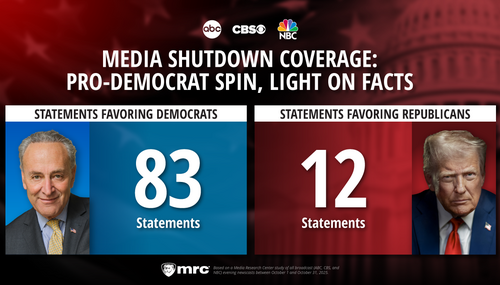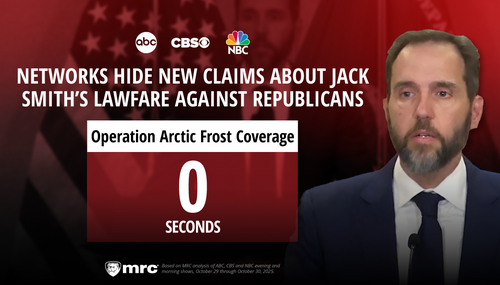Just in time for tomorrow's first-quarter economic growth announcement from the government, Bloomberg Businessweek's Economics Editor is telling readers: "Don't Sweat America's Upcoming Microscopic GDP Growth."
Besides, Peter Coy writes, people need to get used to the supposedly inescapable fact that "Normal growth for the U.S. economy is just a lot lower than it used to be." Americans shouldn't worry, even if tomorrow's GDP figure shows a small contraction (perhaps indicating that Mr. Coy has been tipped to the fact that it will be). The key, the glib Mr. Coy contends, is to understand that "Happiness is all a matter of lowering expectations."
Shortly after the recession's official end in the second quarter of 2009, it became obvious that the U.S. economy's post-recession performance under Keynesian Obamanomics would be dismal and completely unsatisfactory by historical standards. Since then, we've seen by far the worst post-downturn economic growth since World War II — and a strong argument can be made that, in some respects, what we've seen during the past now-almost seven years has even underperformed the post-Great Depression economy under Franklin Delano Roosevelt.
Ever since, instead of questioning why this was occurring, liberal economists, with the eager cooperation of the business press, have relentlessly attempted to lower the economic performance bar. As I wrote in September 2014, as they were quietly moving the standard for "full employment" from its historical 4 percent unemployment rate to a "new normal" 5 percent:
When they can't meet established performance standards, the left makes up excuses, lowers the standards, and, if necessary, revises history along the way.
In November of last year, Reuters told readers, despite average gross domestic product growth of 3.4 percent from 1947 to 2007 of 3.4 percent — a period which included ten recessions, that annual GDP growth of 2 percent is "around its (the economy's) long-run potential."
Mr. Coy has lowered that bar even further to a level which, from the perspective of individuals and families, is virtually zero growth (HT to a BizzyBlog commenter; posted in full because of its brevity, and for fair use and discussion purposes; bolds are mine):
Brace yourself for a tiny number on Thursday, when the Bureau of Economic Analysis reports a fresh figure on gross domestic product growth in the U.S. The median estimate of economists surveyed by Bloomberg is for an annual growth rate of just 0.6 percent for the first three months of 2016. A number that low was long considered strong evidence of an impending recession. Anything below 1 percent growth was "stall speed," an airplane metaphor for flying too slowly for the air passing over the wings to provide lift.
This time around, don't sweat the small number.
A new research note by Michael Feroli, chief U.S. economist at JPMorgan Chase & Co., predicts annualized growth of only 0.3 percent, below the consensus. But he says a recession is unlikely because a sub-1 percent number isn't as bad as it used to be, now that the economy's normal growth rate has slowed.
A sub-1 percent quarter was "a fairly reliable signal of impending recession risk" from 1947 to 2007, Feroli wrote, back when the sustainable growth rate of the economy was around 3 percent. Now, though, slower population growth and other factors have brought the sustainable growth rate down to more like 1.5 percent, according to JPMorgan estimates. Two percentage points below that would be negative 0.5 percent. In other words, the theory goes, the economy could actually shrink a bit for one quarter without stalling out and falling into a prolonged downturn.
"Put another way," Feroli wrote, "with slower trend growth we are more likely to see sub-1 percent or sub-0 percent quarters, but ... such occurrences shouldn't necessarily be seen as harbingers of crisis."
See? Happiness is all a matter of lowering expectations.
Since U.S population growth has been averaging about 0.8 percent per year during the Obama era, 1.5 percent annual economic growth means barely noticeable per-capita growth of just 0.7 percent. This is less than one-third of the per-capita growth of 2.12 percent (3.37 percent compounted annual growth less 1.25 percent compounded population growth) seen from 1947-2007.
Mr. Coy wants us to lower our expectations to the point where we have virtually no expectations.
I also love how Mr. Coy cites population growth "and other factors" as causing today's lower alleged "normal" growth rate.
Gosh, I wonder what those "other factors" could be?
Here are a few: out of control and arbitrary regulation; high taxation which makes the U.S. uncompetitive against other nations; levels of workforce participation last seen in the 1970s; Obamacare; the war on fossil fuel-based energy; and, oh yes, the endless Keynesian "stimulus" of record deficit spending and a record national debt buildup which have succeeded only in stimulating misery. Get these causes of the "new normal" out of the way, and we'll once again have an economy which meets its citizens' reasonable expectations.
In the richest of ironies, Peter Coy currently has this tweet at the top of his Twitter page:
What rubbish.
There's a perfectly accurate, non-glib explanation for Japan's growing poverty and other economic problems: They are the result of over two decades of massve, misguided and economy-distorting Keynesian stimulus.
Thanks to Obamanomics, the U.S. has been heading in Japan's direction for the past eight years, only at a faster pace.
Cross-posted at BizzyBlog.com.





